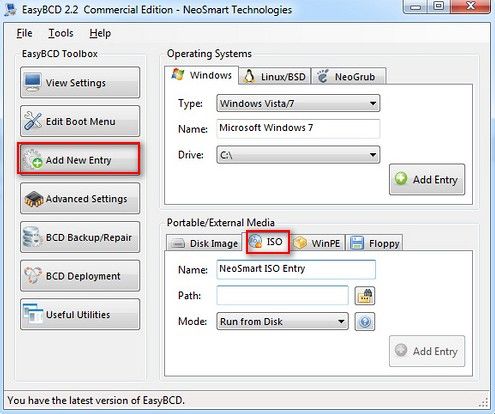

But I would ahve to imagine that it is not installing mbr.bin to the PBR as that binary is meant for the MBR on a MBR partitioned system. In other words, it is installing itself to the partition boot record, just as you are trying to do with dd. From that information it determines the partition the directory is on, and it installs syslinux to that partition for you. When you use "extlinux -i /mnt/boot/syslinux" you are telling syslinux where the configuration directory and helper files are located. I don't know how else to explain this to you jwhendy. I'm still a bit confused about this, as I thought a bootloader had to be "installed" somewhere other than just (a) file(s) on the boot partition. I'm going to try again but just omit the last step. I can't tell if he's distinguishing between the MBR and the partition boot sector because dd-ing mbr.gin to the partition won't work, or if he was just correcting my terminology?Īs far as I know EasyBCD just makes some sort of local copy of the installed bootloader and uses that on Windows startup since I can't get to the encrypted MBR myself from Linux, only when Windows is running. I posted on the EasyBCD support forum but I'm not sure that the answer really helped much. Your comment kind of made it seem like I should do it the other way around. The wiki has `extlinux -install` first and then `dd. I really appreciate the help! I'll give a whirl to adding the syslinux menu and see if that helps knowing which order to do the above two steps would be great. I don't think I'll need chain.c32 since I'm not going to be loading anything else, just using EasyBCD to chain syslinux. I'm wondering if since I don't have a menu.c32, perhaps that's why it's just sitting there with a blinking cursor. Though I think that this EasyBCD sounds like it might freak me out even more in how much automagic setup it tries to do for the user (I googled it real quick out of curiousity). grub2 freaks me out in how little control it makes me feel like I have. I also think you can force grub2 to install the the PBR, but I am not certain on that. Worst case, you can simply use the grub-legacy package from the AUR and do it that way. If you are using something of questionable comaptibility it is probably best to look into the documentation and see what is up. Offhand I cannot think of what those filesystems are, but I am fairly certain that it can handle ext (four is what I am the most iffy about) and I think it can handle vfat. You do need to ensure that you are using a filesystem that is compatible with extlinux.

I cannot see how this would goof anything up, and if you did indeed happen to manage that, it would tell you about it when you tried to install extlinux to the partition. It should be fine to dd the filesystem to /dev/sda2 then use extlinux to install it.


 0 kommentar(er)
0 kommentar(er)
